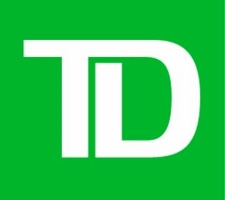@TDAM_Canada
Investor Knowledge + 5 Minutes = New Thinking
Over the past quarter, equity markets managed to rise, thanks in large part to strong earnings (primarily by a small group of mega-cap stocks). This performance came in the face of investor anxiety around stubborn inflation and reduced expectations that the Federal Reserve (Fed) will rate cuts soon. So, once again, the markets had to climb the infamous "Wall of Worry" and prevail. What exactly is the "Wall of Worry" you ask?
The Wall of Worry is a reference used to describe the market's ability to show resilience in the face of negative economic or corporate news that would otherwise cause a pullback in markets and instead they edge higher. The markets' ability to climb a Wall of Worry reflects investor confidence that these issues will be resolved at some point.
Ultimately however, when you really think about it, equity markets never seem to be a stress-free place. Even when the market is rising, many investors will invariably think "how long will this keep going for?" or "I think a correction is coming soon!" And as the market continues to climb the Wall of Worry, the decision to stay invested can become increasingly difficult.
TD Asset Management Inc. (TDAM) has a timely and easy to digest publication that helps investors get over the Wall of Worry. Every quarter, the TD Wealth Asset Allocation Committee (“WAAC”) publishes their thoughts on the markets and economy including a positioning overview in the Market Perspectives. In the recently published Q3 Market Perspectives the WAAC provides its latest views on asset classes, where investing opportunities may arise, and future scenarios for global economies and interest rates. Key Q3 highlights include:
- Global economic momentum gained a step relative to expectations but, even so, the Bank of Canada ("BoC") and European Central Bank ("ECB") began rate-cut cycles; the first G7 central banks to do so.
- In the U.S, economic growth this year is expected to nearly match 2023’s pace, at 2.4%. However, this is partly due to a very strong 4% hand-off in the second half of 2023, which has boosted the 2024 average. By the end of this year, U.S. growth is expected to slow to 1.7% on a Q4 over Q4 basis, as the longevity of higher interest rates create more weight under the normalization of savings and job markets.
- Eurozone growth has surprised to the upside in early 2024, albeit from low expectations. Nonetheless, forecast revisions are now leaning toward upgrades, as the prospect of lower interest rates creates some optimism that a floor can be maintained under economic momentum. However, the risk of an uptick in inflation from geopolitical tensions or solid domestic labour markets remains ever-present.
- The Canadian economy should benefit from interest rate relief, but overall economic momentum is forecast to remain subdued as indebted consumers continue to adjust. Consumer spending is expected to cool even though the BoC has started to cut interest rates, as borrowing costs remain higher than the COVID-19 pandemic lows. Additionally, a softening labour market is expected to weigh on the pace of consumer spending.
- China exceeded forecasters’ economic expectations in the quarter, leading to an upgrade to 2024 gross domestic product (GDP). With a 5% growth target almost assured, there is doubt that the government will provide more stimulus to the economy. Ultimately, China’s aging demographics and restructuring of the economic drivers will maintain a slowing growth trajectory as the years progress.
Access to the insights
For access to TDAM's full update, please check out the latest Market Perspectives.
The information contained herein has been provided by TD Asset Management Inc. and is for information purposes only. The information has been drawn from sources believed to be reliable. The information does not provide financial, legal, tax or investment advice. Particular investment, tax, or trading strategies should be evaluated relative to each individual’s objectives and risk tolerance.
Certain statements in this document may contain forward-looking statements (“FLS”) that are predictive in nature and may include words such as “expects”, “anticipates”, “intends”, “believes”, “estimates” and similar forward-looking expressions or negative versions thereof. FLS are based on current expectations and projections about future general economic, political and relevant market factors, such as interest and foreign exchange rates, equity and capital markets, the general business environment, assuming no changes to tax or other laws or government regulation or catastrophic events. Expectations and projections about future events are inherently subject to risks and uncertainties, which may be unforeseeable. Such expectations and projections may be incorrect in the future. FLS are not guarantees of future performance. Actual events could differ materially from those expressed or implied in any FLS. A number of important factors including those factors set out above can contribute to these digressions. You should avoid placing any reliance on FLS.
The TD Wealth Asset Allocation Committee (“WAAC”) is comprised of a diverse group of TD investment professionals. The WAAC’s mandate is to issue quarterly market outlooks which provide its concise view of the upcoming market situation for the next six to eighteen months. The WAAC’s guidance is not a guarantee of future results and actual market events may differ materially from those set out expressly or by implication in the WAAC’s quarterly market outlook. The WAAC market outlook is not a substitute for investment advice.
TD Asset Management Inc. is a wholly-owned subsidiary of The Toronto-Dominion Bank.
®The TD logo and other TD trademarks are the property of The Toronto-Dominion Bank or its subsidiaries.
 Canada
Canada

